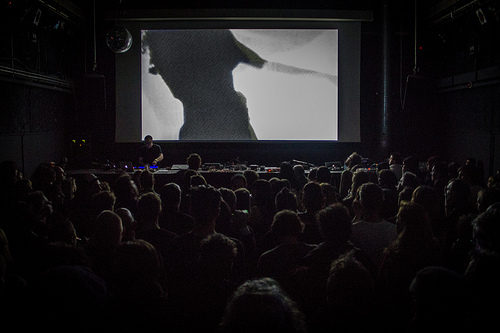“I can’t wait to be a cyborg” someone wrote on a YouTube thread once. Our scientific instruments have brought within the spectrum of human perception phenomena that up to a few decades ago were too small or too enormous to be perceived. But what is at stake in this humanization of the universe? Are we sure we’re not losing anything on the way?

The “Dark Universe” exhibition at NASA takes a good look at our universal outlook, our “place in the stars,” by featuring installations that deal with our relationship to what’s outside our planet, in an attempt to measure the immense, to capture the universal and bring it down to Earth. (Funny enough, they do so just as the East India Company used to capture exotic animals and bring them back to Europe.) Félicie d’Estienne d’Orves has encased an erupting star in a glass vitrine, as if supernovas can be on display in a museum like vases and fossils. Semiconductor’s “Black Rain” removes us from the Earth completely, and has us standing in outer space, as if coronal eruptions and planetary orbits are now in our backyard, observable from our balcony while drinking coffee. HC Gilje’s “Revolver” does something similar, by transforming a small space in an Amsterdam gallery into a galactic scene of rotation, orbit, timelessness. Matthijs Munnik and Ivana Franke, through a different process, also scale down the immense for human viewing, by putting cityscapes, wormholes, and rotating planets on the very tip of our optical nerve.
In such a way, the immense, and for that matter the otherwise invisible and imperceivable, is appropriated for human viewing. By scaling down lightyears into centimeters, and solar systems into ceiling lamps, we bring into the human world things that are by definition not of this world. And there’s nothing wrong with that of course, because it’s all play. Nothing is done literally. This whole exhibition does have the air of a playground. Dark, yes, and mysterious, but still a media-art depository of toys. And this is based on the fact that each installation in the exhibition (with the exception of “Revolver,” and “Kulunka”) is a version of our main entertainment devices and venues: Semiconductor’s “Black Rain” is presented as an open-air cinema; Matthew Biederman places us in a hallucinatory film theatre; Ivana Franke invites us to watch TV with our eyes closed; Matthijs Munnik puts us in a trippy dance club; Félicie d’Estienne d’Orves offers us seats facing a theatre stage. It becomes clear just how deeply our media-art and our art festivals are rooted in, and connected to, entertainment.
Another idea that is prominent in the exhibition (and in the whole festival for that matter) is the idea of manipulating the senses, blurring them and short-circuiting them, under the pretext of exploring the unknown. However, any experience that throws me upon myself, that is, makes me sense myself sensing, is by definition an alienating experience, one that cuts me off from the world. This is especially felt in the installations by Matthijs Munnik, Matthew Biederman and Yolanda Uriz Elizalde: as I sense my ears hearing, my eyes seeing and my skin vibrating, I lose everything else beyond these sensations, and I’m left in a sensory feedback loop, unconnected to those around me. The monumental monolith of Matthijs Munnik at the festival’s opening left us all gaping and mesmerised, but still disconnected, lonely, trapped in our own private hallucinations. Is this our vision for the world? One of individual pleasure that cannot be shared?
Fabricating art works is part of erecting the world. And Hannah Arendt has beautifully described the world as a table, which “relates and separates” those sitting around it at the same time. [1] However, we cannot share this world if we’re being violently thrown back upon ourselves. To further quote Arendt, “if we had no other sense perceptions than these in which the body senses itself, the reality of the outer world would not only be open to doubt, we would not even possess any notion of a world at all.” [2] If these art works isolate us from one another by drowning us in our own sensations, what kind of a world are we portraying through making and enjoying these works? And since the world of human artifice is constructed and not found, neither it grows on its own, what is our responsibility in erecting this world, in this way, and not another?
Notes
[1] Hannah Arendt, 1998. The Human Condition. University of Chicago Press, page 52. Originally published in 1948.
[2] The same, page 115.
TEXT: Kiriakos Spirou – IMAGES: Sonic Acts